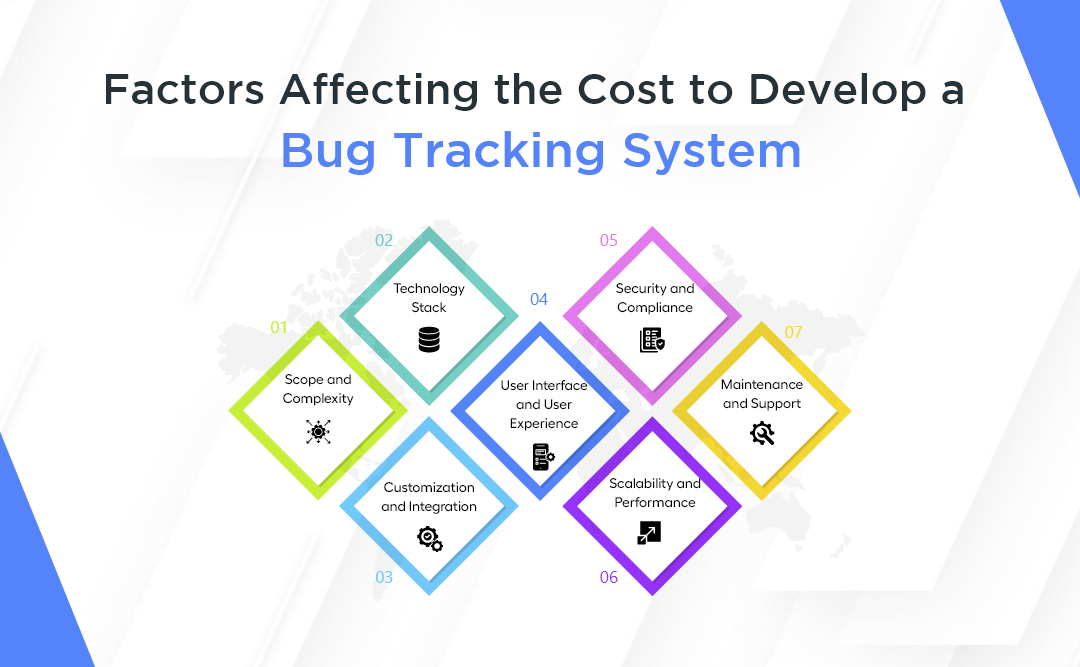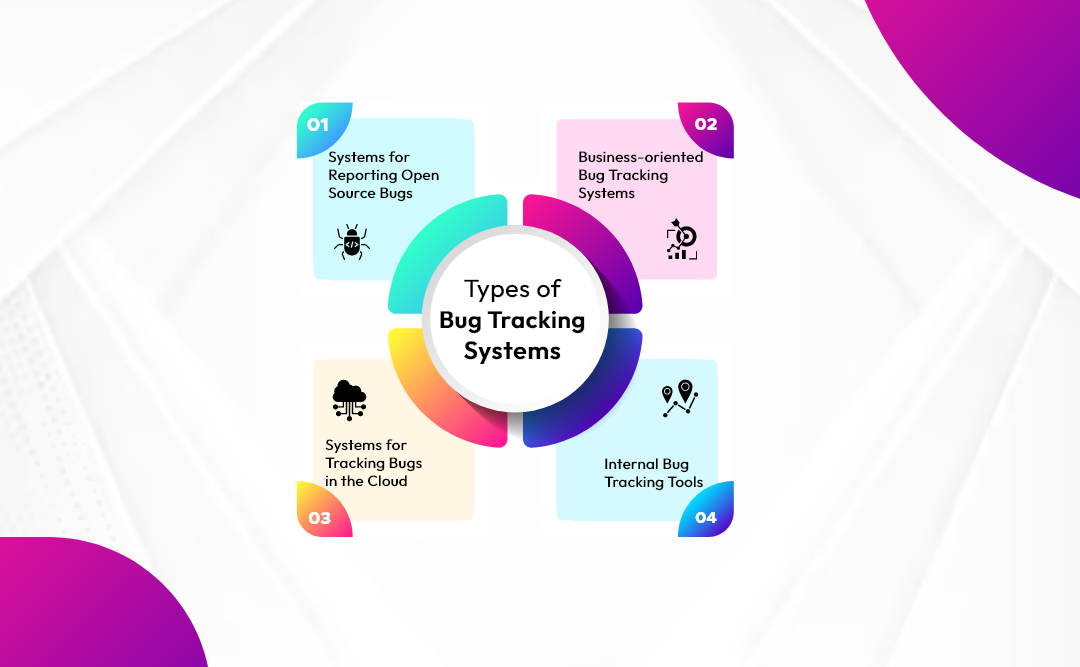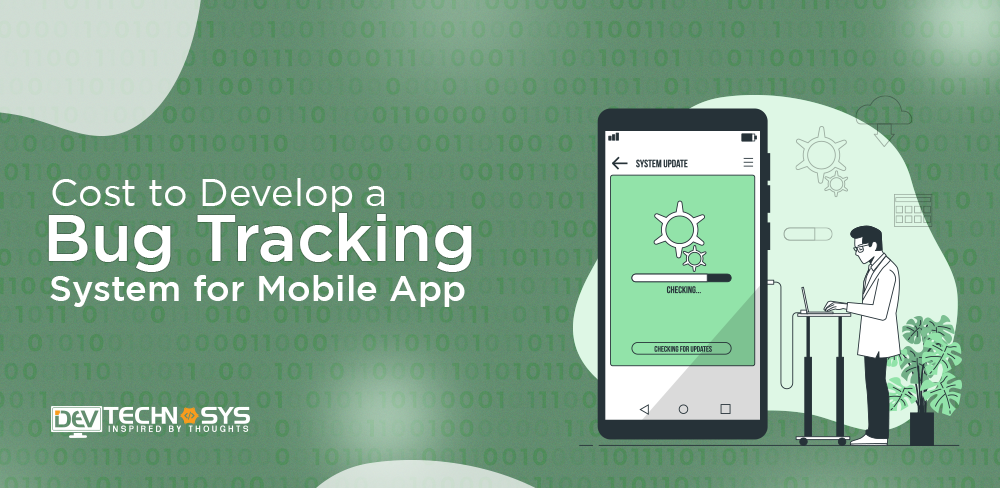In the ever-evolving landscape of mobile app development, ensuring a seamless and bug-free user experience is paramount. A Bug Tracking System, a fundamental tool for software development, plays a pivotal role in this endeavor. But what exactly does it cost to develop a Bug Tracking System tailored to your mobile app’s unique needs, and what’s the price tag associated with this crucial development process?
Well, based on a number of variables, the cost to develop a bug tracking system might vary greatly. While a basic system may set you back anywhere from $10,000 to $13,000, a more intricate, feature-rich solution can escalate to $25,000 or more. These numbers can seem daunting, but they represent a crucial investment to guarantee your mobile app’s long-term profitability and customer pleasure.
In this blog, we delve deep into the world of app development and explore the intricacies of estimating the Cost to Develop a Bug Tracking System for your mobile application.
Let’s embark on this cost-effective adventure to ensure your mobile app reaches its full potential.
What is a Bug Tracking System?
A Bug Tracking System (BTS) is software used to identify, manage, and report software defects. It is a central platform that allows developers, testers, and other stakeholders to track issues, assign tasks, and prioritize fixes. Bug-tracking software systems improve quality and reliability by streamlining communication, enhancing collaboration, and ensuring that software issues are addressed quickly.
You must know that the cost to develop a Bug Tracking System will increase when you include features such as bug reporting, issue classification, assignment, workflow, and reporting in it.
Market Statistics of Bug Tracking Systems
![]()
- Early 2018 saw 21 percent of software bugs being fixed instantly.
- The market for bug-tracking software is anticipated to expand significantly between 2021 and 2028. The predicted time frame is 2021–2028.
- The cloud segment had the largest market share in 2018 with revenues of $127.42 million.
- When modifications D and A combined are used, the pass rate drops to 50%.
- In a SauceLab poll, 45% of respondents said that they planned to increase spending on test automation.
- Software engineers make between 100 to 150 errors for every 1,000 lines.
Cost to Develop a Bug Tracking System
There are several factors that affect the cost to develop a Bug Tracking System. Included are the features needed, the hourly rate of the development team, the complexity of the bug-tracking system, and the project duration.
Bug-tracking software development cost that includes essential features such as issue creation, assigning, tracking status, and reporting could be between $10,000 and $14,000. Costs for more complex bug-tracking systems can range from $15,000 to $20,000.
| Bug tracking system complexity | Estimated Costs |
| Basic bug tracking system | $10,000-$14,000 |
| Advanced bug tracking system | $15,000-$20,000 |
It’s essential to consider ongoing maintenance and support costs, which can be around 20-30% of the initial development cost annually.
The location of your development team also affects costs, with offshore teams generally offering lower rates than those in Western countries.
Remember, these figures are rough estimates, and it’s crucial to consult with a software development company to get a more accurate estimation of cost to develop a Bug Tracking System based on your project’s unique requirements.
Factors Affecting the Cost to Develop a Bug Tracking System

A bug tracking system can be crucial to software development projects, as it allows for the efficient identification, reporting, and management of software defects. Cost to develop a bug tracking system varies widely depending on a number of factors. The cost of developing a bug-tracking system will be looked at in this section.
1. Scope and Complexity:
The two main factors that affect the cost to develop a bug tracking system are scope and complexity. A system with limited functionality will cost less to develop than one with more advanced features, such as integration with other tools and custom reporting.
2. Technology Stack:
Costs are also heavily influenced by the choice of technology stack. Costs can vary depending on if you choose open-source software, proprietary software, or a mix of both. All costs, including licensing fees, hosting infrastructure, software development bug tracking system tools, and other costs, need to be taken into consideration.
3. Customization and Integration:
The cost of customizing your bug tracking software to meet organizational needs will increase. Customization can include designing unique user interfaces or workflows or integrating with other software tools such as version control systems, continuous integration pipelines, the best project management software, or continuous integration pipelines.
4. User Interface and User Experience:
For efficient bug tracking, a user-friendly and intuitive UX/UI is crucial. Design and usability investments can be costly, but they also increase user adoption and productivity. UI/UX design complexity or mobile compatibility can lead to increased costs.
5. Security and Compliance:
When dealing with sensitive data, security is of paramount importance. The cost to develop a Bug Tracking System can be significantly impacted by implementing robust security measures and encryption as well as compliance with industry standards (such as HIPAA or GDPR). Security audits and updates on a regular basis are essential expenses.
6. Scalability and Performance:
A software bug tracking system should be able to accommodate your current and future needs. Additional infrastructure and development resources may be required to optimize performance and scalability. It is important to ensure that the system is able to handle an increasing number of bug reports from users and can effectively manage them.
7. Maintenance and Support:
The cost of initial development is just one part of the equation. To keep your bug tracking system current and working correctly, you need to provide ongoing maintenance and support. Bug fixes, updates, and user support may be included in the cost.
Types of Bug Tracking Systems

Software engineers need bug tracking systems to fix errors and find problems. Your software product development team’s requirements and resources will determine which bug-tracking software to use. You must carefully evaluate each option and choose a system that fits your team’s needs and workflow.
1. Systems for Reporting Open Source Bugs:
Open-source bug-tracking software is free, adaptable, and open-source. It offers a flexible and customizable way to track issues. They are often developed by a team and have many features, such as reporting, issue tracking, and collaboration tools.
One of the advantages is that open-source bug tracking tools can be adapted to meet the needs of a specific development team. Support and updates are not always readily available due to the reliance on these tools in the community.
2. Business-Oriented Bug Tracking Systems:
Commercial bug-tracking solutions are expensive but offer sophisticated functionality and support. These products are simple to use and come with a number of capabilities, such as automated problem detection, project management software integration, and bug identification.
These systems are a great investment for larger software development bug tracking teams because they offer reliable support and upgrades.
3. Systems for Tracking Bugs in the Cloud:
Web browsers are used to access cloud-based bug tracking systems, which are hosted by external servers. In addition to being available from any location with an Internet connection, these systems frequently provide extra features like automated backups and safety measures. However, they may be affected by internet connectivity issues and ongoing membership fees.
4. Internal Bug Tracking Tools:
Internal bug-tracking system is created and maintained by a Saas development company. These systems, while offering total customization and control, require substantial technical expertise and resources for installation and maintenance. These systems are ideal for large development teams who have the resources to manage and create their own system.
Steps to Implement the Robust Bug Tracking System

Now the main question arises “how to make a bug tracking system for mobile development or how to implement the bug tracking system”? Well, it is quite daunting to implement a bug tracking system in the mobile app. However, following the below steps and getting assistance from an expert can assist you in developing a bug tracking system.
1. Define Clear Roles and Responsibilities
To create an effective bug-tracking system, you must first define roles and responsibilities clearly for each member of your team. You will want to hire dedicated developers, testers, and product managers with the responsibility of identifying, prioritizing and fixing bugs. Each team member should understand their role in the tracking process.
2. Select the Right Bug Tracking System Tool
There are many bug-tracking software options available. You’ll need to compare them to determine which one best suits your needs. Jira Bugzilla MantisBT and GitHub Issues are some of the most popular bug-tracking tools used by mobile app development teams.
Take into mind elements like tool integration and simplicity of usage. Also, consider customization options and pricing. Your bug-tracking tool will play a key role in streamlining the process.
3. Establish a Standard Bug Reporting Process
Develop a standard reporting process once hire software developer or a team and tools. All new bugs must follow a standard format, which includes information like:
- Title: Bug title: A short and descriptive title
- Description: A detailed description of the bug including how to reproduce it.
- Severity is the level of severity (high, middle, or low) according to its impact on users
- Device: The model/OS of the device on which the bug has been found
- Media: Screenshots, videos or logs that could identify the root cause
- Build version: This is the version of the app in which the bug has been found.
4. Prioritize and Address High-severity Bugs Quickly
Not all bugs have the same severity. Your team should assign severity levels to each bug as it is reported. Priority should be given to high-severity bugs that impact the user experience. In subsequent sprints, medium and low-severity bugs can be fixed. Bugs can be fixed efficiently by determining their severity.
5. Conduct Regular Bug Triage Meetings
For the most efficient bug tracking system in software testing, hold regular bug-triage sessions with your team. In these meetings, you will review existing and new bugs, assign them to developers, reprioritize as necessary, and reorder the bugs. Discussions about bugs that need further investigation in order to find the root cause. These meetings ensure that all bugs of high priority are dealt with quickly and no bugs slip by.
6. Close and Verify Resolved Bugs
A tester will need to verify the fix once a developer has determined that they have resolved a bug. To verify that the defect has been fixed and no new problems have been added, the tester will test the fix on a mobile device. The bug will be closed when the fix has been verified. If there are any further problems, the bug will be reopened. This step is crucial to ensuring a quality user experience.
7. Continuously Optimize Your Process
Your bug track system can still be improved, even if you have the best tools and processes. Review your bug reports regularly to identify trends. Find ways to detect certain types of bugs earlier in the custom software development cycle. Ask your team for feedback on what is working well and where there are frustrations. Change your bug-tracking system to reduce the number of bugs in your apps.
Conclusion
A mobile app’s bug tracking system development cost estimation is complicated by a number of factors. The ultimate cost is significantly influenced by elements including complexity, features, platforms, and development resources.
It’s critical to specify accurate needs and take into account ongoing maintenance expenditures. A bug tracking system that meets your goals and stays within your budget is ensured by careful preparation.
FAQ
1. How to Build a Bug Tracker?
Here are the steps that you can follow to build a bug tracker:
- Define requirements
- Choose a technology stack
- Design the database schema.
- Develop the bug tracker software
- Implement user authentication and access control.
- Test thoroughly.
- Deploy the system.
- Continuously maintain and update as needed.
2. How Much Does a Mobile App Development Cost?
The mobile app development cost depends on multiple factors. Generally, the basic app would cost around $10000–$14000 while the complex one would be around $16000–$25000 or more.
3. How Long Does it Take to Develop a Bug Tracking System for a Mobile App?
Project duration varies but could range from 2-3 months for a basic system to 8 months or more for a complex one.
4. Can I Add Features to the Bug Tracking System After the Initial Development?
Yes, but scope changes can increase costs, so it’s best to plan and document requirements carefully.





























